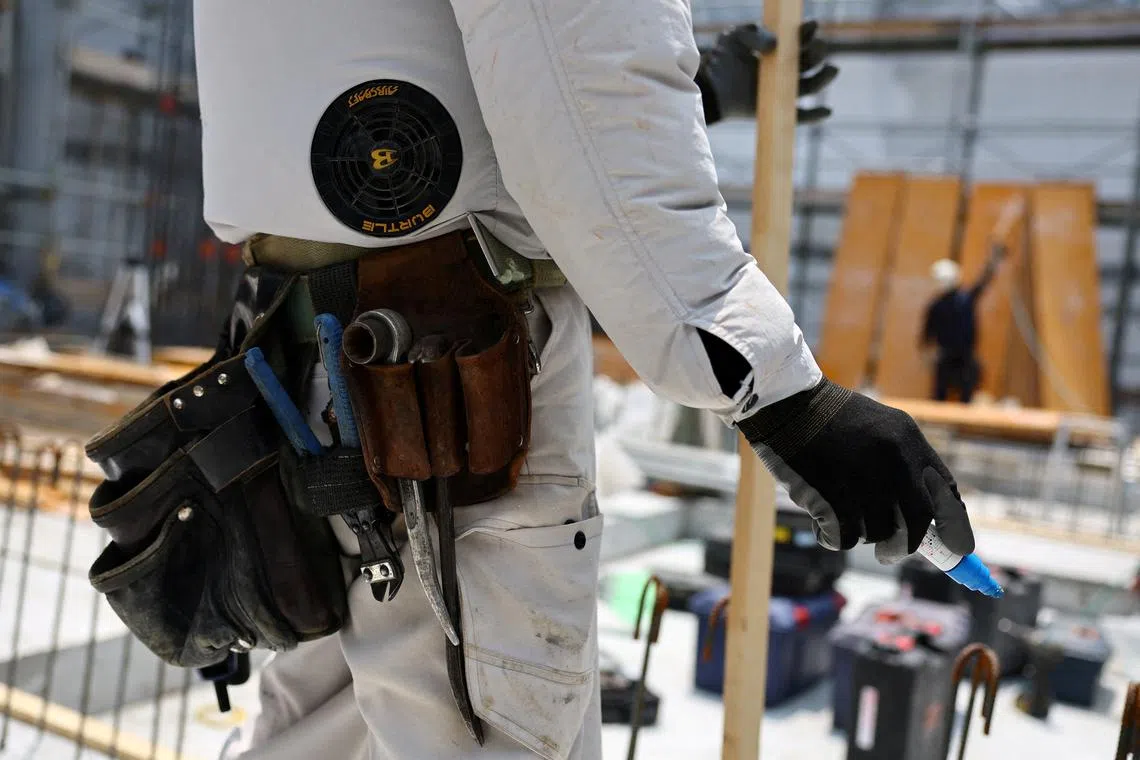Japanese firms take steps to protect outdoor workers as heatwave sizzles on
Sign up now: Get insights on Asia's fast-moving developments

A worker wearing an air-conditioned jacket, which has cooling fans on its back, works at the top of an under-construction apartment building in Tokyo on July 7.
PHOTO: REUTERS
Follow topic:
TOKYO - Japan endured another day of a searing heatwave on July 7, with temperatures soaring to the highest this year in Tokyo and leaving those having to work outside vulnerable to the risk of heatstroke.
Heatstroke alerts were issued in 30 of Japan’s 47 prefectures, the highest in 2025, after the country suffered its hottest June on record.
The extreme heat, which has become a norm in summertime Japan, has turned into a major workplace hazard, prompting the government to roll out labour safety regulations from June requiring companies to implement protection measures against heatstroke.
Employers are now required to ensure employees wear clothing that allows air to pass through easily, to install a ceiling to block sunlight and to provide a break space with air-conditioning or shade.
At an apartment construction site in Tokyo, where temperatures exceeded 35 deg C for the first time in 2025 on July 7, workers for Daito Trust Construction donned puffy air-conditioned jackets equipped with cooling fans on their backs while at work.
The custom-made jacket, which the company developed with a construction supplies manufacturer, uses thermoelectric effects to enhance cooling and has been distributed to 1,500 workers.
“When I wear this vest, I don’t sweat as much, so I don’t lose physical strength,” said 47-year-old construction worker Atsushi Mizutani.
Construction workers are particularly at risk of heatstroke.
They accounted for nearly 20 per cent of deaths or illnesses caused by heatstroke in the workplace in 2023, labour ministry data showed.
The overall number of heatstroke cases at work more than doubled that year from a decade ago.
“In the past, we didn’t wear air-conditioned jackets or anything like that and there weren’t as many cases of people collapsing (due to heatstroke) as there are now,” said Mr Takami Okamura, 57, who has been a construction worker for 34 years.
“In recent years, air-conditioned jumpers and other such items have become a necessity, which makes me realise just how hot it gets.” REUTERS

